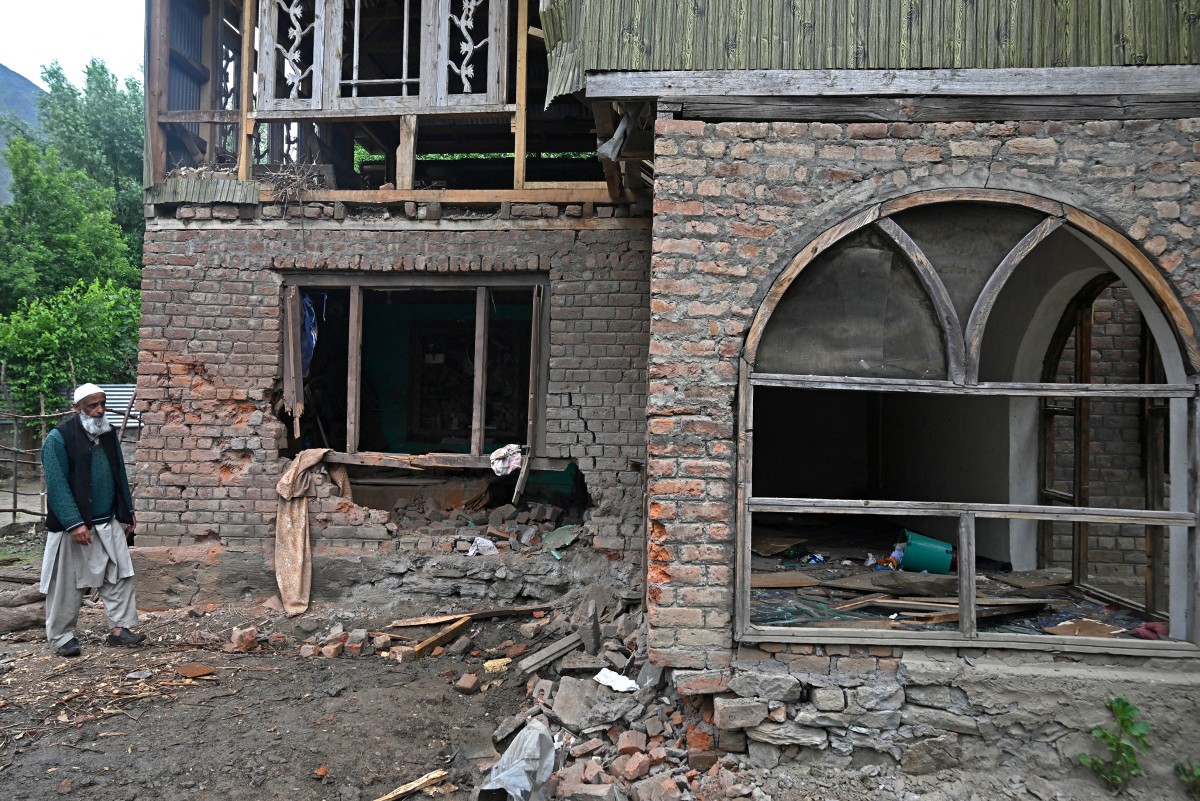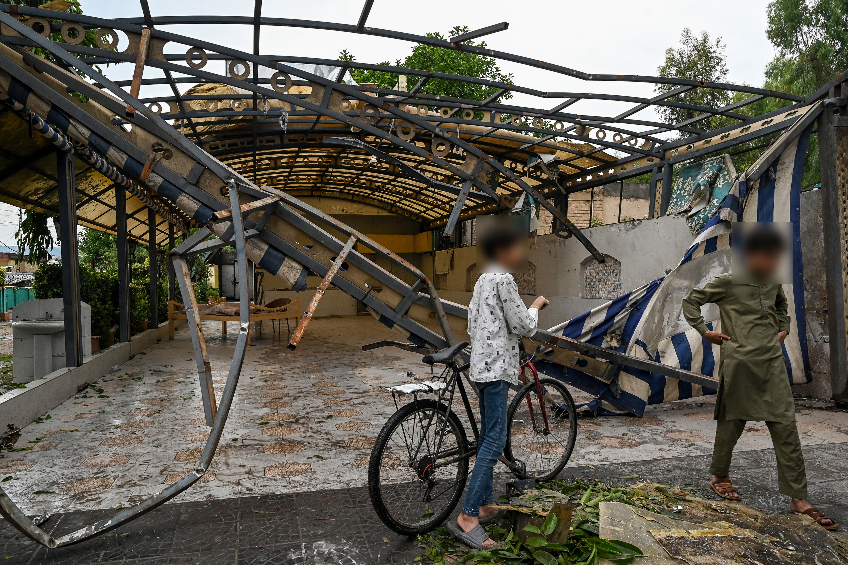
By Agence France-Presse
India and Pakistan traded accusations of ceasefire violations on Sunday, May 11, hours after U.S. President Donald Trump announced that the nuclear-armed neighbors had stepped back from the brink of full-blown war.
India’s foreign secretary said it retaliated after Pakistan’s “repeated violations” of the truce, while Pakistan said it “remains committed” to the ceasefire and that its forces were handling violations by India with “responsibility and restraint”.
AFP staff in Srinagar in the Indian-administered Kashmir region reported hearing loud explosions. A senior official in Pakistani-run Kashmir told AFP that “intermittent exchange of fire is ongoing” across the de facto border in the contested region, the Line of Control (LoC).
More details were not immediately available, and it was not possible to independently verify the claims.
On Saturday, May 10, Pakistan and India had agreed to a full and immediate ceasefire after days of deadly jet fighter, missile, drone, and artillery attacks which killed at least 60 people and saw thousands flee their homes along the border as well as in divided Kashmir.
The news had been surprisingly announced by Trump on Saturday.
“After a long night of talks mediated by the United States, I am pleased to announce that India and Pakistan have agreed to a FULL AND IMMEDIATE CEASEFIRE. Congratulations to both countries on using common sense and great intelligence,” Trump posted.
Late Saturday, Trump posted again on Truth Social, praising the leaders of India and Pakistan for understanding that “it was time to stop the current aggression” and also pledging to increase trade “substantially” with both nations.
The U.S. president also said he would work with New Delhi and Islamabad to “see if, after a ‘thousand years’, a solution can be arrived at concerning Kashmir”.
India’s Foreign Secretary Vikram Misri had said earlier that both sides would “stop all firing and military action on land, air and sea” with effect from 5:00 pm (1130 GMT).
He then accused Pakistan of “repeated violations” and said the Indian armed forces “are giving an adequate and appropriate response.”
Meanwhile, the foreign ministry in Islamabad said Pakistan “remains committed to faithful implementation” of the truce.
“Notwithstanding the violations being committed by India in some areas, our forces are handling the situation with responsibility and restraint,” it said.

‘Vigilant’
The conflict was touched off by an April 22 attack in the Indian-administered side of Kashmir that killed 26 people, mostly male Hindu tourists, which New Delhi blamed on Islamabad.
India accused the Pakistan-based Lashkar-e-Taiba–a UN-designated terrorist organization–of carrying out the attack, but Islamabad has denied any involvement and called for an independent probe.
Indian former foreign secretary Harsh Vardhan Shringla said on Sunday, May 11, that the ceasefire “seems to be a temporary situation.
“The Pakistanis were prompted by the Americans,” he said, adding that India’s “Operation Sindoor was a huge success in terms of targeted strikes against terrorists.”
Militants have stepped up operations in Kashmir since 2019, when Indian Prime Minister Narendra Modi’s Hindu nationalist government revoked its limited autonomy and took the state under direct rule from New Delhi.
The countries have fought several wars over the territory, which both claim in full but administer separate portions since gaining independence from British rule in 1947.
“The ceasefire is a positive step,” said Bilal Shabbir, an IT consultant in Muzaffarabad, in Pakistan-administered Kashmir.
“In war, it’s not just soldiers who die; it’s mostly civilians — and in this case, it would have been the people of Kashmir.”
In Srinagar, resident Sukesh Khajuria was more cautious.
“The ceasefire is welcome, but it’s difficult to trust Pakistan. We have to be vigilant,” he said.
U.S. Secretary of State Marco Rubio said the ceasefire came after he and Vice President JD Vance engaged with senior officials on both sides.
Rubio also said on X that they had agreed to “start talks on a broad set of issues at a neutral site”.
On X, Pakistan Prime Minister Shehbaz Sharif said his country—which has long sought international mediation in Kashmir—”appreciates” the U.S. intervention.
However, India has consistently opposed mediation, and observers were skeptical of the truce.
“The ceasefire was cobbled together hastily, and at a moment when tensions were at their highest,” U.S.-based South Asia analyst Michael Kugelman wrote on X after the claims of violations.
“India appears to have interpreted the deal differently than did the U.S. and Pakistan, and it’s likely not keen on the broader talks it calls for. Upholding it will pose challenges,” he warned.
News of the ceasefire was met with relief from countries including Britain and Iran, as well as the United Nations.
China, which borders India and Pakistan, said Beijing was “willing to continue playing a constructive role” and remained concerned with any escalation,
